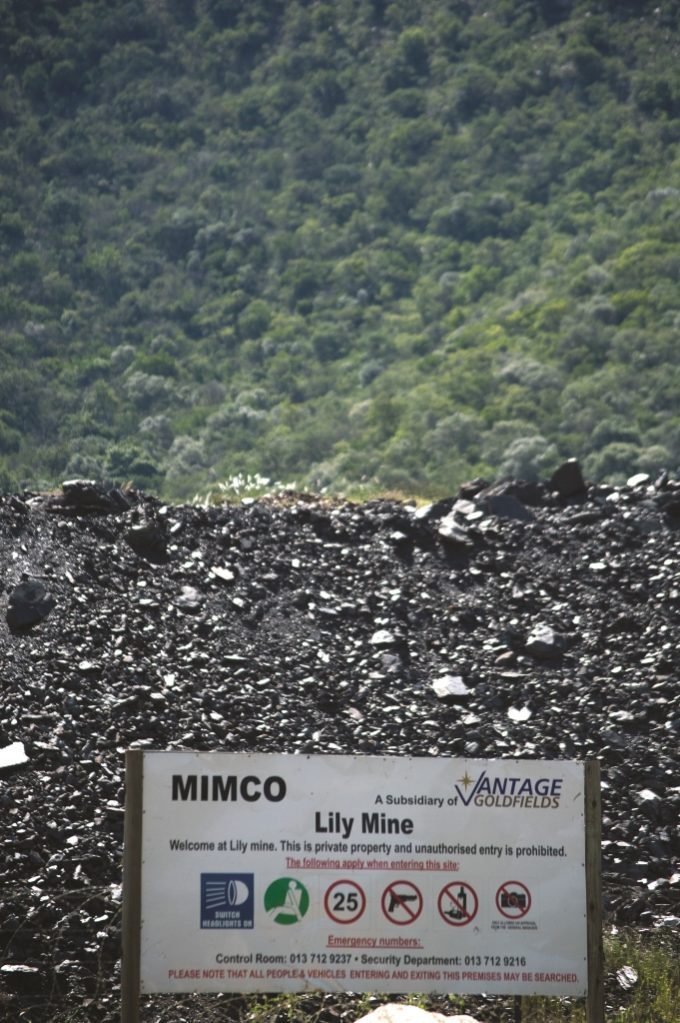The people here call it Mpumalanga – the place where the sun rises. Every morning when the light grips Louisville, 40 kilometers from Barberton, December Mazibuko and Jabulile Nyarende, wake up to another day in hell.
For weeks, they prayed for Yvonne Mnisi, Pretty Nkambule and Solomon Nyarende – three of their family trapped in a steel container, 80 meters underground after a crown pillar collapsed at the open pit gold mine, Lily Mine, on February 5.

Nkambule’s family lives in a house made of mud in Louisville, 20 minutes away from Lily Mine. Her husband, Mazibuko, sits on a small bench, cradling their seven-month-old daughter and five-year-old son. There is the agony of hope and despair in their eyes.
“This haunts me every day, I can’t even begin to explain the pain I’m feeling right now. If they come out alive I would be grateful, but at this point we are ready to accept any news. Even if they are dead we want their bodies, because we want closure,” says Mazibuko, who also works at Lily Mine.
The three missing workers are all breadwinners. Mazibuko will have to raise four children alone.
“I am so heartbroken, if I could go down and rescue them myself, I would. Whenever I look at my sister’s husband and children my heart tears into pieces. Everything has been done, but still nothing,” says Nkambule’s older sister, Phindile Nkambule.
As the drills bore away at the mine, families of the trapped believed more could be done.
“The situation is painful, because they are taking a long time to get those people out. I believe that the management is not doing enough to rescue them. They should look at other means of getting the three out,” says Mazibuko.
“A ritual is done at all mines, but it has never been done here. There were signs that something like this would happen. People have been hurt countless times in that mine and we’ve been telling the managers to do a ritual, but they keep refusing… all they care about is making money.”
On the day of the tragedy, 115 people clocked in for work and nearly all were rescued.
The three missing were working in a steel container, used as a lamp room, which crashed down a sink hole.
Jabulile Nyarende, Solomon’s aunt, remains hopeful that her nephew will come out alive.
“What is frustrating me the most is that Solomon used to take care of his mother who is mentally ill. Who is going to take care of her now? But, I serve a living God and I believe that in this situation, he would never forsake us,” she says.
Three collapses delayed the rescue. One saw a large part of a hill fall into the hole where the container was. The rescue team suffered another setback when a drill broke.
“A rescue mission has begun, and the plan is to drill a hole 800 meters away from the sinkhole,” says Mike Begg, Operations Director at Lily Mine, at the gates of the mine on February 23.
The drilling will take three weeks to be completed.
This disaster came days after the South African Chamber of Mines celebrated the lowest fatalities in the history of mining.
In 2015, it was reported that 77 mineworkers died underground, the lowest number on record.
“South African mines are failing dismally to comply with the safety rules and regulations of mines… It’s a really sad situation,” says Jeff Mphahlele, Secretary General of the Association of Mineworkers and Construction Union (Amcu).
“We are concerned about the safety of mines in this country because this is the third incident to happen in three months,” says Sahlulele Luzipho, Chairperson of the Portfolio Committee on Mineral Resources.
“We need to find a way to tighten up the rules where safety compliance is concerned.”
So do the families of the three missing mineworkers of Lily Mine.
